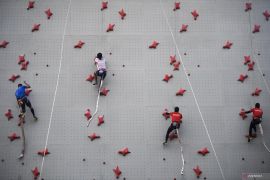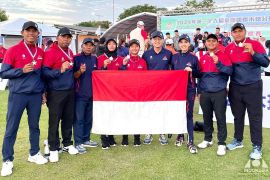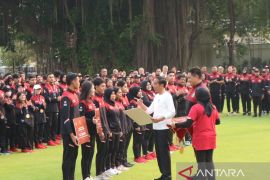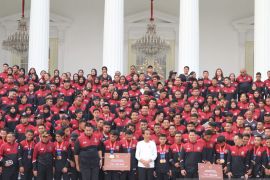"Right now weather conditions in Palembang are not quite good for a big event like the SEA Games," head of BPPT`s unit of artificial rain making technical service, Syamsul Bahri, said.Jakarta (ANTARA News) - The Technology Assessment and Application Agency (BPPT) plans to modify weather in Palembang, South Sumatra, to secure the implementation of the 26th Southeast Asian Games (SEA Games) from November 11 to 22.
"Right now weather conditions in Palembang are not quite good for a big event like the SEA Games," head of BPPT`s unit of artificial rain making technical service, Syamsul Bahri, said here on Wednesday.
He said his agency had already sent a Casa NC212-200 and two more aircraft on November 4, including a Piper Chayenne and a mobile radar for use in weather modification.
The aircraft was loaded with a hygroscopic substance, namely NaCL which will be spread and shot at clouds so that they would immediately turn into rain before the clouds entered the SEA Games area, he said.
"We have been doing it since October 25. This is done at the request of the South Sumatra provincial administration, especially for the opening of the event," Syamsul said, adding there had not been a request for it from Jakarta, the SEA Games co-host.
In 2011 the office had been very busy conducting activities like reducing rainfall, filling up dams for irrigation and power supply and curbing fires.
It conducted rainmaking to fill the Cirata and Saguling dams in West Java on February to March, Jatiluhur dami in March to April and Kotopanjang Riau and Singkarak dams in West Sumatra in May to June and September-November and put out forest fires in South Sumatra in September to October.
He said his agency is now also conducting rain making to fill Bakaru dam in West Sulawesi and Larona dam in South Sulawesi and in Central Java to reduce rain in Merapi mountain to prevent lava flows to residential areas.
Syamsul said since 1985 to 2010 70 percent of his agency`s rain making service had been for energy and agricultural sectors while extinguishing forest forests comprised only seven percent and flood control one percent.(*)
Editor: Heru Purwanto
Copyright © ANTARA 2011











